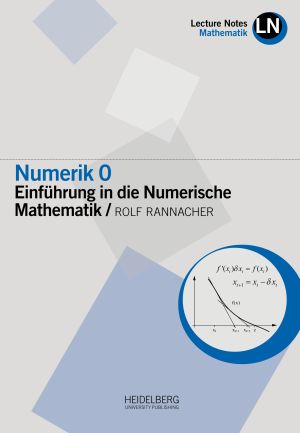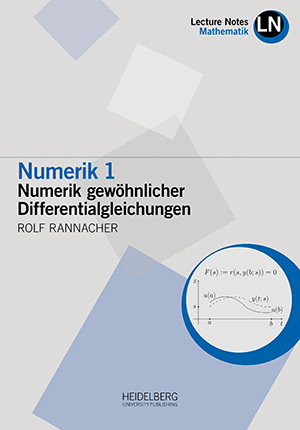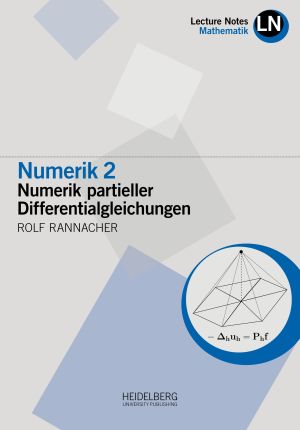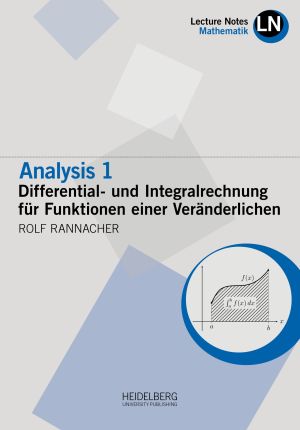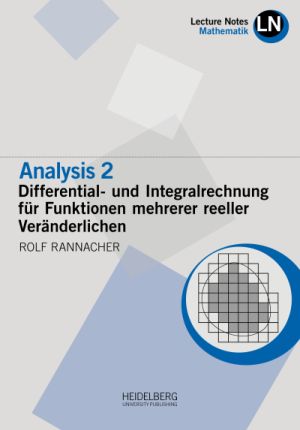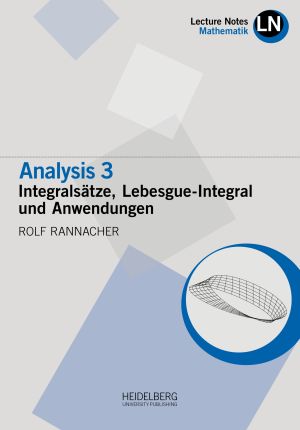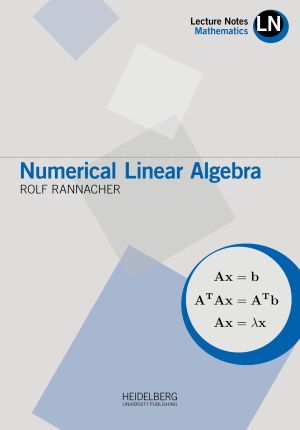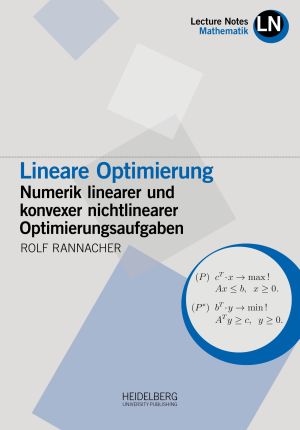Rannacher, Rolf
Numerik 0: Einführung in die Numerische Mathematik
This introductory text is based on courses on “Numerical Mathematics” given by the author at Heidelberg University within a multi-semester cycle over a period of 25 years. The present first part covers fundamental concepts of numerical methods for solving ordinary analysis and linear algebra problems. Both theoretical and practical aspects are considered. The understanding of the contents requires only that prior knowledge as is usually provided in the basic Analysis and Linear Algebra courses. For facilitating self-learning the book contains theoretical and practical exercises with solutions.
Numerik 1: Numerik gewöhnlicher Differentialgleichungen
This introductory text is based on courses within a multi-semester cycle on “Numerical Mathematics” given by the author at Heidelberg University over a period of 25 years. The present second part treats numerical methods for solving ordinary differential equations. Again theoretical as well as practical aspects are considered. The last chapter provides an outlook on numerical methods for partial differential equations. The understanding of the contents requires besides the material of the first volume in this series “Numerik 0” only that prior knowledge as is usually provided in the basic Analysis and Linear Algebra courses. For facilitating self-learning the book contains theoretical and practical exercises with solutions.
Numerik 2: Numerik partieller Differentialgleichungen
This introductory text is based on courses within a multi-semester cycle on “Numerical Mathematics” given by the author at Heidelberg University over a period of 25 years. The present third part is devoted to numerical methods for solving partial differential equations. Again theoretical as well as practical aspects are considered.
The understanding of the contents requires besides the material of the first two parts of this series, "Numerik 0 (Einführung in die Numerische Mathematik)" and "Numerik 1 - (Numerik gewöhnlicher Differentialgleichungen)", only that prior knowledge as is usually provided in the basic Analysis and Linear Algebra courses. For facilitating self-learning the book contains theoretical exercises with solutions.
Numerik 3: Probleme der Kontinuumsmechanik und ihre numerische Behandlung
This introductory text is based on courses within a multi-semester cycle on “Numerical Mathematics” given by the author at Heidelberg University over a period of 25 years. The present fourth part is devoted to problems in Continuum Mechanics, especially in Structural and Fluid Mechanics, and their numerical solution by finite element methods. Again theoretical as well as practical aspects are considered. As basis of an appropriate numerical approximation the mathematical models are systematically derived from fundamental physical principles. The understanding of the contents requires besides the material of the preceding parts of this series, “Numerik 0 (Einführung in die Numerische Mathematik)”, “Numerik 1 (Numerik gewöhnlicher Differentialgleichungen)”, and “Numerik 2 (Numerik partieller Differentialgleichungen)” only that prior knowledge as is usually provided in the basic Analysis and Linear Algebra courses.
Analysis 1: Differential- und Integralrechnung für Funktionen einer Veränderlichen
This introductory text is based on lectures within a three-semester cycle on "Real Analysis" given by the author at Heidelberg University. The present first part is devoted to the classical calculus of differentiation and integration for functions of one real variable. Content and presentation are particularly oriented towards the needs of the application in the theory of differential equations, in Mathematical Physics and in Numerical Analysis.
For supporting self-study each chapter contains exercises with solutions collected in the appendix.
Analysis 2: Differential- und Integralrechnung für Funktionen mehrerer reeller Veränderlichen
This introductory text is based on lectures within a three-semester course on "Real Analysis" given by the author at Heidelberg University. The present second part is devoted to the classical calculus of differentiation and integration for functions of several real variables. Content and presentation are particularly oriented towards the needs of the application in the theory of differential equations, in Mathematical Physics and in Numerical Analysis. The understanding of the contents requires besides the material of the preceding part of this series, "Analysis 1 (Differential- und Integralrechnung fur Funktionen einer reellen Veränderlichen)", only some basic prior knowledge of Linear Algebra.
For supporting self-study each chapter contains exercises with solutions collected in the appendix.
Analysis 3: Intergralsätze, Lebesgue-Integral und Anwendungen
This introductory text is based on lectures within a three-semester course on "Real Analysis", given by the author at Heidelberg University. The present third part treats the Riemann integral over lines and surfaces and the integral formulas of Gauß and Stokes. Further, the Lebesgue integral and the corresponding function spaces are introduced. Then, applications are discussed in the theory of Fourier integrals, for basic problems in the calculus of variations and in the theory of partial differential equations. Contents and
presentation are particularly oriented towards the needs of applications in the theory of differential equations, in Mathematical Physics and in Numerical Analysis. The understanding of the contents requires besides the material of the preceding parts of this series, "Analysis 1 (Differential- und Integralrechnung für Funktionen einer reellen Veränderlichen)" and "Analysis 2 (Differential- und Integralrechnung für Funktionen mehrerer reeller Veränderlichen)", only some basic prior knowledge of Linear Algebra. For supporting
self-study each chapter contains exercises with solutions collected in the appendix.
Numerical Linear Algebra
This introductory text is based on courses within a multi-semester cycle on “Numerical Mathematics” given by the author at the Universities in Saarbrücken and Heidelberg.
In the present part basic concepts of numerical methods are presented for solving linear optimization problems (so-called “Linear Programming”). This includes besides the classical ”Simplex method“ also modern ”Interior-point methods“. As natural extensions methods for convex nonlinear, especially quadratic, optimization problems are discussed.
Theoretical as well as practical aspects are considered. As prerequisite only that prior knowledge is required, which is usually taught in the introductory Analysis, Linear Algebra, and Numerics courses. For facilitating self-learning the book contains theoretical and practical exercises with solutions collected in the appendix.
Lineare Optimierung: Numerik linearer und konvexer nichtlinearer Optimierungsaufgaben
This introductory text is based on courses within a multi-semester cycle on “Numerical Mathematics” given by the author at the Universities in Saarbrücken and Heidelberg. In the present part basic concepts of numerical methods are presented for solving linear optimization problems (so-called “Linear Programming”). This includes besides the classical ”Simplex method“ also modern ”Interior-point methods“. As natural extensions methods for convex nonlinear, especially quadratic, optimization problems are discussed. Theoretical as well as practical aspects are considered. As prerequisite only that prior knowledge is required, which is usually taught in the introductory Analysis, Linear Algebra, and Numerics courses. For facilitating self-learning the book contains theoretical and practical exercises with solutions collected in the appendix.


